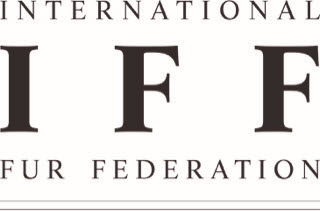Editor’s Note: As CFDA members continue to debate the use of real fur versus fur-free, we asked the Humane Society of the United States and the International Fur Federation to each state their case through an editorial. The views expressed in this feature article are those of the Humane Society of the United States.
The Death of Fur
2017 was perhaps the biggest year ever for the fur-free movement. Gucci, Michael Kors, Jimmy Choo and VF Corporation—owner of The North Face and Timberland—adopted 100 percent fur-free policies, opting instead for innovative alternatives that allow creative freedom while foregoing cruelty. And retailers like Yoox Net-a-Porter, Stein Mart and Burlington Stores also banned fur. On top of that: Berkeley, California joined West Hollywood and Sao Paolo, Brazil in banning fur sales; India banned fur imports; Croatia and Czech Republic banned fur farming; and Germany passed reasonable fur-farming regulations that makes raising animals for fur no longer viable there.
Now, 2018 is already picking up where 2017 left off.
San Francisco banned the sale of fur within the city and online. Furla, Donna Karan, Rent the Runway, Nicholas K and Columbia Sportswear announced fur-free policies, and Bottega Veneta confirmed its long-standing fur-free position. Versace also announced a fur-free policy, with Donatella Versace saying: “I don’t want to kill animals to make fashion. It doesn’t feel right.” Plus, Norway (once the world’s top fur producer) banned fur farming, Linden Staub became the first modeling agency to adopt a fur-free policy and Canadian and Chinese fur sales are plummeting
And it’s only March.
The industry’s shift coincides with a dramatic increase in consumers’ social concerns. People are no longer OK with wild animals languishing in steel leg-hold traps for days or living their entire lives in a small fur factory farm cage, resulting in constant fear, insanity, self-mutilation and a horrific death. On top of animal cruelty, fur production is environmentally harmful—with pelts being dipped in toxic chemical soups and animal waste runoff polluting soil and waterways. Several European advertising standards committees have ruled that advertising fur as environmentally friendly is “false and misleading.” Plus, endangered animals killed or maimed by fur traps is an ecological disaster.
Of course, no material has zero environmental footprint—with the same being true of faux fur (as well as leather, wool, cotton, and every other material). And that will be one challenge producers must address. And there’s no doubt they will, as new faux fur companies like House of Fluff, Maison Atia (created by J. Mendel’s former creative director and Gilles Mendel’s daughter) and Pelush (started by a former Fendi employee) continue innovating.
As well, innovation doesn’t stop at faux fur. Gucci’s CEO, Marco Bizzarri, said, “Creativity can jump in many different directions instead of using furs,” which could be new fabric innovations, like denim fur, or bio-fabrications, where real skin and fur can be grown in labs without the animal cruelty or environmental impacts.
In 2018, the shift toward animal-friendly products and practices will only get stronger. Brands and retailers meeting the demand for cruelty-free products will drive innovation and sales like never before. This year, more cities and countries will pass legislation banning fur sales and production, more companies will go fur-free, and alternatives will get even better and more environmentally friendly. The future has never looked so bright for fur-bearing animals.
PJ Smith is senior manager of fashion policy for The Humane Society of the United States. Disclosure: The HSUS holds stock in the following companies mentioned in this article: Michael Kors, Columbia Sportswear, GIII (Donna Karan), Stein Mart, and Burlington.
The views expressed in this feature article are those of the Humane Society of the United States.





